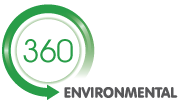Definition of waste
Determining whether something should be classed as waste is relatively straightforward. The Waste Framework Directive defines waste as ‘any substance or object…which the producer or the person in possession of it discards or intends or is required to discard’.
If, therefore, the intention is for continued use and the item is capable of continued use, there is no reason why it should be classed as waste. For example, toner cartridges that are sent back for refilling and further use do not need to be classed as waste.
Similarly, if a by-product of a production process can be used in another process as a raw material without any modification, there is also no need for it to be classed as waste. This is explained in the documents above.
Once a material has become waste, however, the process to determine iit as non-waste is more complex and requires three basic tests to be met as defined on GOV.UK
EU Article 6 (1) WFD sets out the end of waste test. It contains 4 conditions that all recycled or recovered material must meet to achieve end of waste status.
Condition (a) – the substance or object is to be used for specific purposes
To assess if the material will be used for a specific purpose, consider:
- if there is a clear use – if not, there is unlikely to be a specific use
- if there is more than one use – if so, the material is only likely to be considered to have a specific use if those uses can exist alongside each other
If the material has more than one use, you need to consider if you need to make an end of waste assessment for each use.
Condition (b) – a market or demand exists for such a substance or object
To assess if a market or demand exists for the material, use the same criteria as set out under condition (a) of the by-products test.
Condition (c) – the substance or object fulfils the technical requirements for the specific purposes and meets the existing legislation and standards applicable to products
To assess if the material meets all the relevant technical requirements, standards and laws, use the same criteria as set out for the first part of condition (d) of the by-products test.
Condition (d) – the use of the substance or object will not lead to overall adverse environmental or human health impacts
To assess if the material has overall adverse impacts on the environment or human health, use the same criteria as set out for the second part of condition (d) of the by-products test.
If it is not clear whether any of the conditions (a) to (d) have been met, you should take a precautionary approach and decide that they have not.
As well as considering conditions (a) to (d) when making end of waste decisions, the criteria in Article 6 (2) of the WFD must also be considered. These criteria must be included in any detailed criteria that operators follow to meet the end of waste test for a particular material, for example quality protocols or resource frameworks, and must be considered when assessing end of waste on a case-by-case basis where appropriate.
Waste producers can apply the rules to make their own decision, but this can be challenged by the Environment Agency where they believe the product does not meet their criteria. The EA’s End of Waste Panel has reopened iand the EA has now set up a Resource Framework process (Jan 2022) where applications can be made for end of waste approval. However, be warned, the EA advises that the process can
- take a minimum of 12 to 18 months
- cost you more than £40,000, as these are the likely total fees for the Environment Agency’s work
A list of agreed End of Waste Protocols has been published here.
The UK also transposed the EU Regulations for enabling iron, steel and aluminum as well as copper and glass to be classed as end of waste. Conforming with these requirements enables the operator to then be classed as a reprocessor for packaging regulations accreditation purposes.
For construction waste, a Code of Practice has been developed to determine what is waste, backed up with an EA Position Statement.
